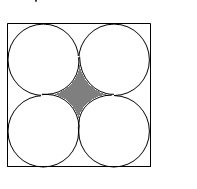Events & Promotions
|
|

GMAT Club Daily Prep
Thank you for using the timer - this advanced tool can estimate your performance and suggest more practice questions. We have subscribed you to Daily Prep Questions via email.
Customized
for You
Track
Your Progress
Practice
Pays
Not interested in getting valuable practice questions and articles delivered to your email? No problem, unsubscribe here.
- Nov 19
12:30 PM EST
-01:30 PM EST
Learn how Keshav, a Chartered Accountant, scored an impressive 705 on GMAT in just 30 days with GMATWhiz's expert guidance. In this video, he shares preparation tips and strategies that worked for him, including the mock, time management, and more - Nov 20
01:30 PM EST
-02:30 PM IST
Learn how Kamakshi achieved a GMAT 675 with an impressive 96th %ile in Data Insights. Discover the unique methods and exam strategies that helped her excel in DI along with other sections for a balanced and high score. - Nov 22
11:00 AM IST
-01:00 PM IST
Do RC/MSR passages scare you? e-GMAT is conducting a masterclass to help you learn – Learn effective reading strategies Tackle difficult RC & MSR with confidence Excel in timed test environment - Nov 23
11:00 AM IST
-01:00 PM IST
Attend this free GMAT Algebra Webinar and learn how to master the most challenging Inequalities and Absolute Value problems with ease. - Nov 24
07:00 PM PST
-08:00 PM PST
Full-length FE mock with insightful analytics, weakness diagnosis, and video explanations! - Nov 25
10:00 AM EST
-11:00 AM EST
Prefer video-based learning? The Target Test Prep OnDemand course is a one-of-a-kind video masterclass featuring 400 hours of lecture-style teaching by Scott Woodbury-Stewart, founder of Target Test Prep and one of the most accomplished GMAT instructors.
Originally posted by genuinebot85 on 24 Jul 2013, 11:14.
Last edited by Bunuel on 24 Jul 2013, 11:17, edited 1 time in total.
Last edited by Bunuel on 24 Jul 2013, 11:17, edited 1 time in total.
Edited the question.
Kudos
Bookmarks
C
Be sure to select an answer first to save it in the Error Log before revealing the correct answer (OA)!
Difficulty:
 35%
(medium)
35%
(medium)
Question Stats:
74% (02:00) correct 26%
(01:54)
wrong
26%
(01:54)
wrong  based on 859
sessions
based on 859
sessions
History
Date
Time
Result
Not Attempted Yet
Four identical circles are drawn in a square such that each circle touches two sides of the square and two other circles (as shown in the figure below). If the side of the square is of length 20 cm, what is the area of the shaded region?
(A) 400 – 100π
(B) 200 – 50π
(C) 100 – 25π
(D) 8π
(E) 4π
Could not understand the solution, need help.
Attachment:
File comment: This is the figure for the question.

GeometryPost12Ques2.jpg [ 7.89 KiB | Viewed 87175 times ]
GeometryPost12Ques2.jpg [ 7.89 KiB | Viewed 87175 times ]
(A) 400 – 100π
(B) 200 – 50π
(C) 100 – 25π
(D) 8π
(E) 4π
Could not understand the solution, need help.
Kudos
Bookmarks
genuinebot85
Look at the image below:
Attachment:
Untitled.png [ 13.57 KiB | Viewed 67539 times ]
The area of the square = \(20^2 = 400\).
The area of four circles = \(4*(\pi{r^2})=4*(\pi{5^2})=100\pi\) (the diameter of each circle is 1/2 of the side, thus the radius of each circle is 1/4 of the side).
The area of 16 regions = \(400-100\pi\).
The area of shaded region (4 regions with red dots) = \(\frac{400-100\pi}{4}=100-25\pi\).
Answer: C.
Else you could simply find the area of the smaller square (1/4 of the bigger) and subtract the area of the circle. This way you'd also get the area of 4 regions with red dots.
Hope it's clear.
General Discussion
Kudos
Bookmarks
genuinebot85
You can draw a second square, with vertices at the centers of the circles. Then that square has sides of 10 units, and the quarter circles have total area of 25*pi.
















